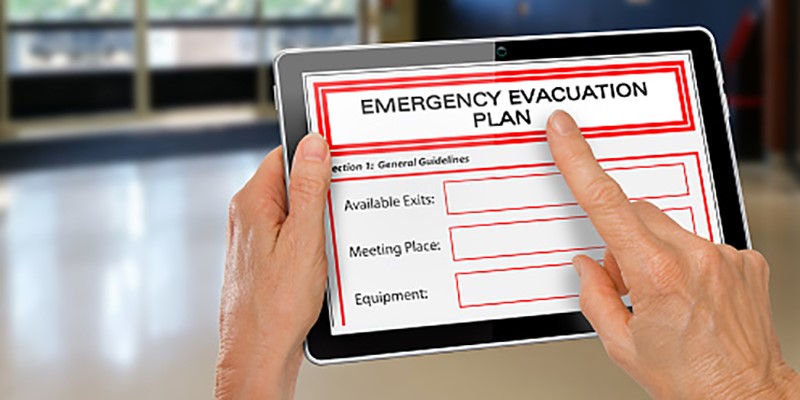An Emergency Action Alan (EAP) is required under OSHA standard 1910.38, with the purpose to facilitate and organize employer and employee actions during emergencies that occur within the workplace. A well-developed EAP and proper employee training minimize the potential for employee injuries and workplace structural damage during emergencies. Alternately, poorly developed plans and lack of training could lead to confusion, injury, fatalities, and property damage during emergencies.
Minimum Requirements
At a minimum, an EAP must include, but is not limited to, the following elements:
- Means of reporting fires and other emergencies.
- Evacuation procedures and emergency escape route assignments.
- Procedures for employees who remain to operate critical plant operations before they evacuate.
- Accounting for all employees after an emergency evacuation has been completed.
- Rescue and medical duties for employees performing them.
- Names or job titles of persons who can be contacted for information regarding the EAP or an explanation of their duties under said plan.
Most Emergency Action Plans must be written, but employers with fewer than 10 employees may communicate the EAP to staff orally instead. A written EAP should be kept in the workplace and available to employees for review.
Plan Development and Implementation
Developing a comprehensive Emergency Action Plan that targets specific issues in the workplace requires an evaluation of the facility operations and day to day activities. Once a thorough workplace evaluation takes place, the employer, or representatives hired by the employer, can begin the planning process. Workers may additionally help to evaluate the workplace for compliance with OSHA standards as a preventative measure.
Just developing an EAP is not enough to ensure safety in the workplace and preparedness for necessary emergency responses, including the execution of a safe evacuation during an emergency. The employer must designate capable employees to implement the various roles described within the EAP and train their employees thoroughly to ensure the safety of all workers during a workplace emergency. The Emergency Action Plan will only be successful if it is kept current with Facility operations and if employees are properly educated and trained prior to an actual emergency or necessary evacuation situation that may occur.
Training
It is necessary for the employer to review the EAP with employees for advanced preparation for all possible emergency situations. The EAP, once developed, would specifically be used to train employees on how they should respond in emergency situations, taking into account the specifics of the workplace and facility operations.
All employees must be made aware of how they should react in situations that would require an evacuation of the workplace (such as fires, explosions, floods, earthquakes, hurricanes, tornadoes, toxic material releases, radiological and biological accidents, civil disturbances and workplace violence), as a disorganized evacuation could result in an injury or worse.
Need Help?
If your business is in need of an Emergency Action Plan, a workplace evaluation or walkthrough, or it requires an update to an existing Emergency Action Plan, please contact an experienced Walden environmental engineer for any consulting needs. Give us a call today at 516-588-6859!

